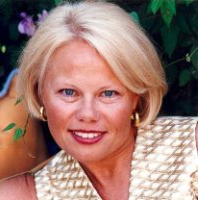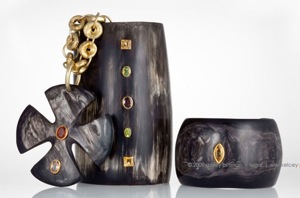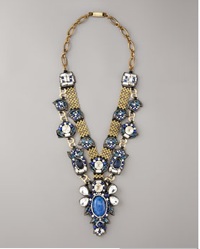Articles and News
THE FUTURE OF LUXURY | May 18, 2011 (7 comments)

This is the first in a periodic series examining where the luxury market is headed in both the immediate and the long-term, and what jewelers must do to remain relevant.
Merrick, NY—Luxury is back. The experts have said it, the news outlets have reported it, and prestige jewelers are experiencing it. Obviously welcome news after the gut-wrenching Great Recession, but like anything else that makes a comeback, there’s always something a little different each time around.
In an exclusive interview with The Centurion, luxury expert and consultant Paula Petersen—a veteran of such venerable names as Cartier, Tiffany & Co., and Van Cleef & Arpels—discusses where luxury stands in the post-recession world and predicts some new directions for both jewelers and brands.
The Centurion: What do you think is the single biggest shift that’s likely to happen in the luxury jewelry market?
Paula Petersen: I think it’s going to be a rise in alternative metals and blended or hybrid metals, and a shift away from the belief that a luxury product can only be made of precious metals. Luxury items still need to be chic and beautiful, but it’s going to be more important for the luxury product to give something back and have a story to tell than just to be made of precious metal. For example, there’s a designer named Ashley Pittman who makes beautiful jewelry from horn and brass and precious gems. While working in Africa she was inspired to create this beautiful jewelry that employs local artisans in Kenya.

Ashley Pittman's horn, brass, and gemstone jewelry is made by artisans in Kenya, Africa.
TC: Do you really think luxury consumers will accept non-precious materials as luxury jewelry?
PP: Yes, I absolutely do. It’s not about price, it’s about style. Luxury consumers have been mixing fine and fashion for a long time already. There are costume jewelry designers like Siman Tu or Rajana Khan who are charging hundreds or even more than a thousand, for a piece of costume jewelry. I think going forward jewelers can’t say ‘we only carry ______,’ they will need to expand their categories.

A lapis, agate, and crystal necklace set in brass by Rajana Khan retails for $1075 at Neiman Marcus.
TC: But what about jewelers who aren’t doing well now with lower-priced items? Whose customers do seem to only want gold and diamonds?
PP: Boomers are still spending, and I think that’s masking some emerging trends. When I talk to younger retailers, they’re seeing different trends than older retailers. The definition of luxury also has changed and now includes electronics, extreme sports vacations, and other categories that weren’t even competition 20 years ago.
TC: What other product categories are going to be relevant in the immediate future?
PP: I think we’re going to see the estate market pick up tremendously. I think it will be well worth a retailer’s while to have a section of the store dedicated to estate. The mix of old and new is as big now as it’s ever been, there’s a good source of supply, and it attracts a younger audience who wants something different, while not alienating an older customer who still wants precious. Pure estate seems a little musty, but blending it with new is fabulous!
I also see symbolism coming back in a huge way. Remember the Eighties with Madonna and her cross? Now it’s not just religious symbols, it’s all symbols. Celtic, zodiac, all kinds of symbols are all over design. Messaging is important and a symbol is stronger than words for conveying a message. The resurgence of the peace sign and the happy face were a primitive rebirth of this, but it will become much more sophisticated and I think it will start on the high end and trickle down [rather than up from the low end]. Also, Asia is a huge luxury market and it’s very symbolic.
Finally, I think “Made in America” is going to matter in a way that it hasn’t since the Fifties. This is an extremely opportune time for American brands to look at exporting. I think this is a moment for American brands.
TC: What pieces are trending?
PP: The bracelet has been strong, but jewelry trends typically run about seven years and the bracelet is in about year five or six. It’s still on the bell curve, but I think it’s on the descending side, not ascending. The cuff and bangle have been strong so now I’m looking for a rise in soft link styles. Also look for focus to start shifting to the ring. And we’re seeing a lot of very big, bold looks. The price of metals has driven the size of pieces down, but the actual [fashion] trend is for big, not small.

Big and bold is a directional fashion trend, though challenging for costly precious metals. Here, a fashion jewelry necklace by designer Siman Tu.
Serious jewelry will always have a place, but our society has gotten increasingly casual, not more formal. Even black tie, outside of a few urban areas, is more relaxed. You might even see a tuxedo jacket with a pair of blue jeans. New York City is more casual than it used to be but you still have a disproportionate number of people wearing suits, as compared to Orlando, Phoenix, and other cities.
TC: You mentioned Boomers are spending. They came back to spend last Christmas and this year has been strong so far, but is this sustainable? Are they going to shop till they literally drop, or is it a reaction to frugal fatigue and they’ll retreat again?
PP: The [stock] market resurgence had a lot to do with last Christmas, and we’re still trending toward the top, so people feel flush again as long as it stays up. But if you really delve into the figures indicating luxury is back, you’ll see that most of it is driven by China, not North America. For the big global brands like LVMH, luxury is back, because it’s driven by Asia. But if you’re not a big global brand, you really have to have something unique. I have clients who are doing phenomenally well right now, but they are doing a totally new take on tradition, very different, very unique.
TC: The Millennials now are the target everyone’s trying to hit. What about this market?
PP: There is timing to luxury consumption. There’s marriage, early anniversaries (up to five-year), and later anniversaries (starting between 20-25) after the kids have moved out. In between, luxury’s not a category. You’ve got school, college, dentists, and so forth. Bridal is recession-proof. Customers may go smaller but they won’t stop buying.
TC: So does this mean jewelers are going to be in trouble until the Millennials grow older?
PP: If you want to expand your market share, you have to do two things: one, look at demographics, and two, look at the brands you carry. You could be losing market share by not having brands with broader appeal. People often say they want to gain new customers, but then they don’t have the products to appeal to those new customers.
TC: We’ve talked about a lot of important strategic directions for staying relevant in the long term, but what do jewelers need to do for the next 10 months, vs. the next 10 years?
PP: Right now, before the shows, the most practical step for retailers is to list all their target demographics, and make a big matrix. Be specific, such as “Women over 50. Men over 50. Women 20-30. Men 20-30.’ Then list the brands that appeal to each audience. Then run that up against your sell through. What are your receipts telling you? What are customers who left without buying telling you? It’ll be very clear where the gaps are. You might be ok with that—the market share might be too small to be worth pursuing, but 5-7% of your total buying budget should be dedicated to totally new items. That number might vary a bit, especially for a larger firm with multiple doors it might be a little lower, but for a typical high-end independent, it’s about 5-7%.







